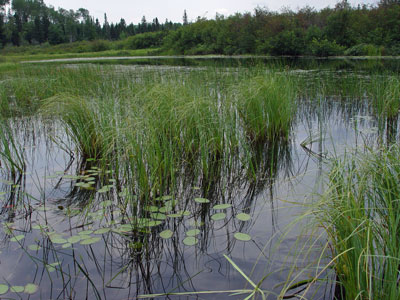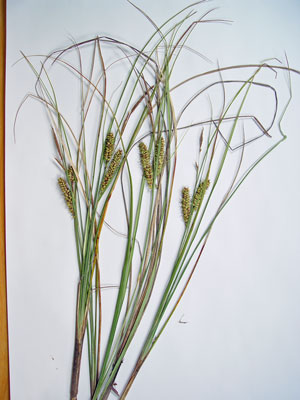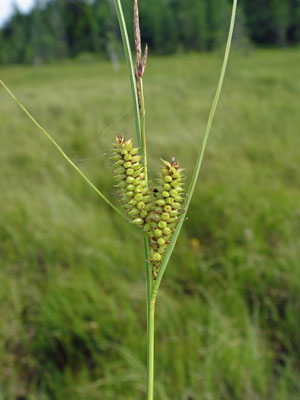DACF Home → Bureaus & Programs → Maine Natural Areas Program → Communities, Plants, and Animals → Rare Plants → Carex rostrata
Carex rostrata Stokes

Beaked Sedge
- State Rank: S2
- Global Rank: G5
- State Status: Special Concern
Habitat: Fens, bogs, lake and stream shore, shallow water [non-forested, wetland]
Range: Maritime provinces and Greenland, south to Maine, west to British Columbia and Alaska.

Aids to Identification: Identification of the members of the genus Carex is difficult and based on rather technical characteristics. Carex rostrata is a member of the section Vesicariae, a group recognized by their inflated perigynia with bi-dentate beaks, trigonous achenes, and persistent styles. The staminate spikes are borne on separate spikes above the carpellate spikes. Carex rostrata can be easily confused for C. utricularia, which is much more common and found in the same type of habitat. Both have cylindrical inflorescences with spreading or ascending perigynia. Carex rostrata has strong papillose on the top side of the leaf, where as C. utricularia is glabrous. Carex rostrata is smooth on the distal half of the leaf (opposed to scabrous in C. utricularia). In general, C. rostrata has narrower leaves and a blue-green glaucous color to the leaves.

Ecological characteristics: A very rare plant found in open wetlands of northern Maine.
Phenology: Fruiting June through August.
Family: Cyperaceae
Synonyms: Carex rostrata Boeckeler, is a synonym for C. michauxiana (also in Maine ), however this name was applied later than C. rostrata Stokes and is therefore invalid.
Known Distribution in Maine: This rare plant has been documented from a total of 12 towns in the following county: Aroostook, Penobscot, Piscataquis, Somerset
Reason(s) for rarity: At southern edge of range.
Conservation considerations: Recently discovered in the state, plants may be threatened if hydrology of the site is altered.